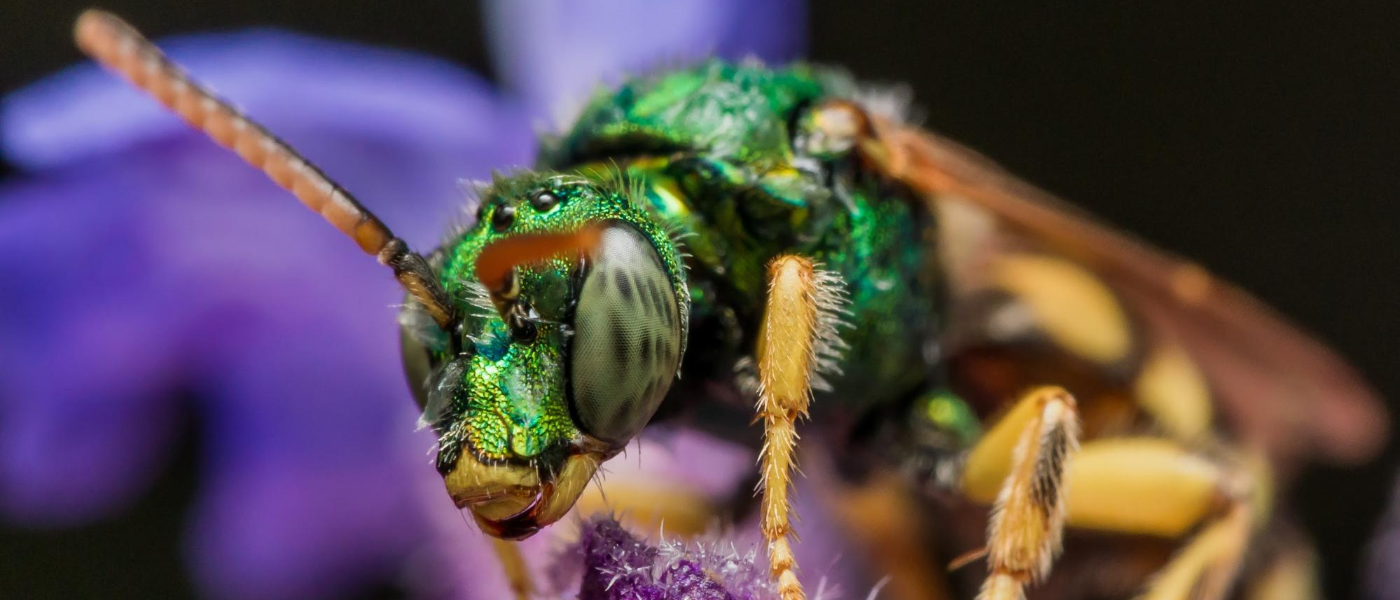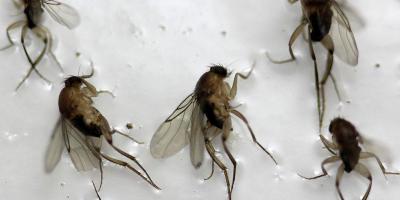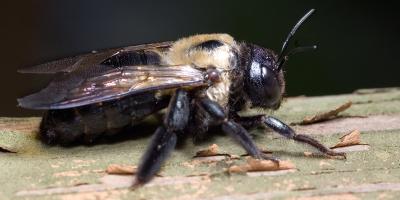Taking a Look at Lone Bees

You’ve heard of the lone wolf, the “Lone Star State” and even the Lone Ranger. But what about the lone… bee?
When most people think of bees, they imagine vast colonies living together in hives, and for the most part that’s true. But occasionally some bees forge their own unique path in the world, leaving the rest of their kin behind.
Solitary bees can vary dramatically in size, shape and color, but are easily identifiable by their choice of single nests in the ground or in wood. Although often confused for flies or wasps, solitary bees are usually much hairier than wasps and have two more wings than flies, for a total of four.
The behavior that separates solitary bees from their social cousins is that females build their nests and feed and care for their young independently, without the “village” of a hive supporting them. Females of some solitary bee species build nests far from any other bees’ lairs, whereas others construct a sort of social group, with nests built near one another.
Some solitary bees, such as the sweat bee, are semisocial and will share both an entrance to their nest as well as some of the responsibilities in rearing each other’s young. The degree of organization and cooperation exemplified by these communities, however, is nowhere near that of a honeybee hive.
All Buzz, No Bite
Not only does solitary bees’ lack of numbers reduce their threat to humans, they also rarely sting. Males don’t even have stingers, although they can be quite territorial and may act aggressively if humans or animals disturb their nests.
Their buzz, however, is much worse than their nonexistent bite.
Female solitary bees can sting, but usually only when provoked. Generally, so long as nearby humans and animals mind their own business, female solitary bees will mind theirs.
Unlike honeybees, solitary bees do not produce honey or live in a colony. Neither do they produce wax to construct their nests or cells.
What they do accomplish, however, is crucial to the survival of many of Earth’s species.
Solitary bees consume nectar directly from flowers and combine it with pollen to feed their young. This process helps pollinate a variety of plant species which other animals rely on for survival, including many of the fruits and vegetables we eat.
Solitary bees are especially great pollinators because they lack pollen baskets like honeybees have. This means far more pollen escapes their grasp, which leads to better reproduction for flowering plants and trees.
A Resort with a ‘Buzz’
One way to liven up a boring backyard, or to maximize pollination of an ornamental or vegetable garden, is to construct or purchase a bee hotel, which will attract solitary bees to your property.
You can build your own bee hotel by drilling smaller holes of various diameters deep into untreated, unfinished, seasoned wood (plastic or glass do not “breathe,” making them impractical, as the hotel “rooms” will be too hot and humid to sustain bees). The holes should be deep, but not drilled completely through to the opposite side. This creates little pocket “nests” that bees will love to dress up as their own.
Position your bee hotel on the south face of any structure so that it gets plenty of sun, preferably in a place that is protected from strong winds and at least three feet above the ground to maximize it’s “curb appeal.”
Unsure if the bee you’ve found is friend or foe? Email a photo to Gary for expert identification tips.



